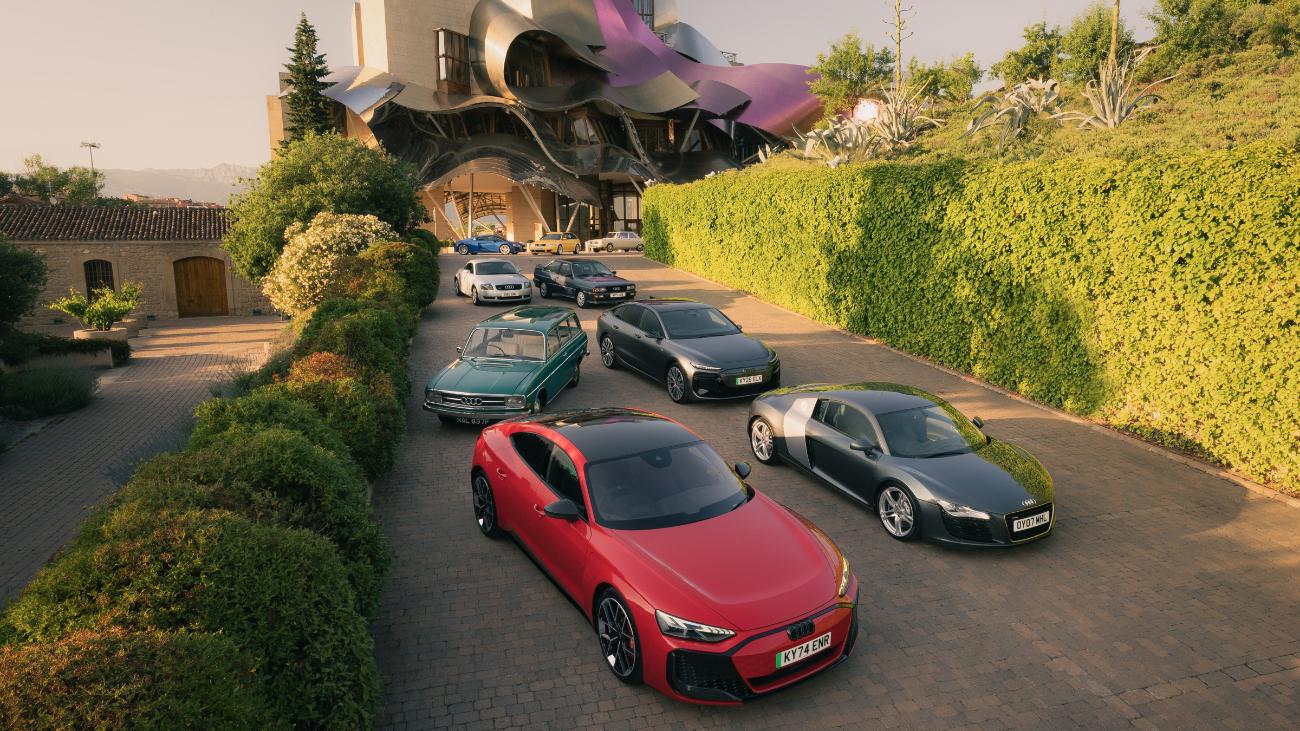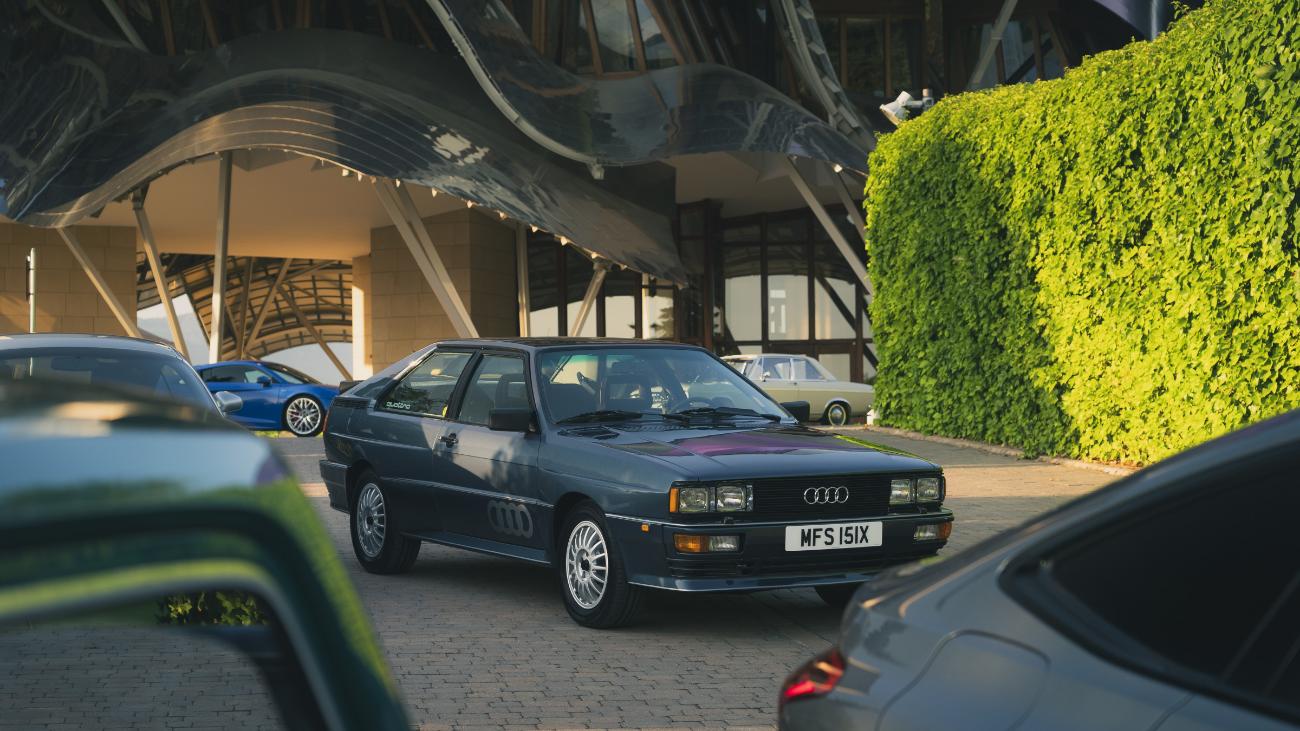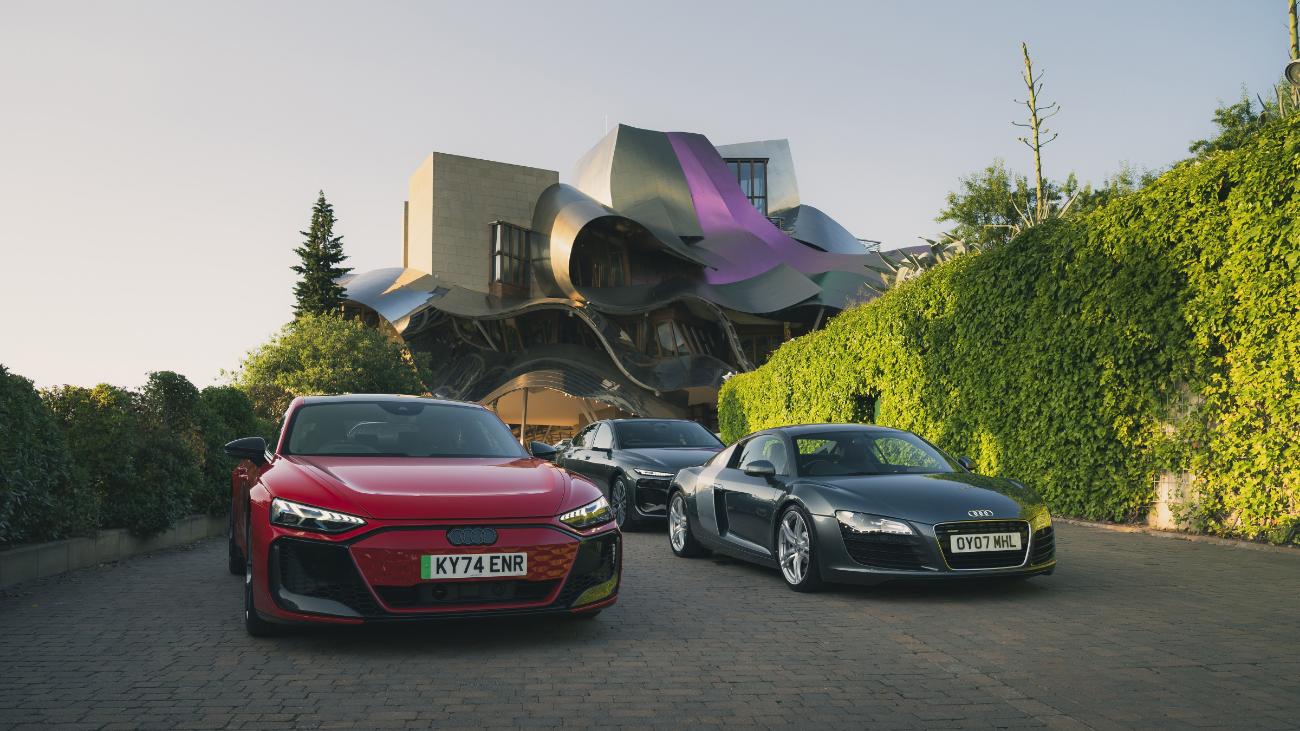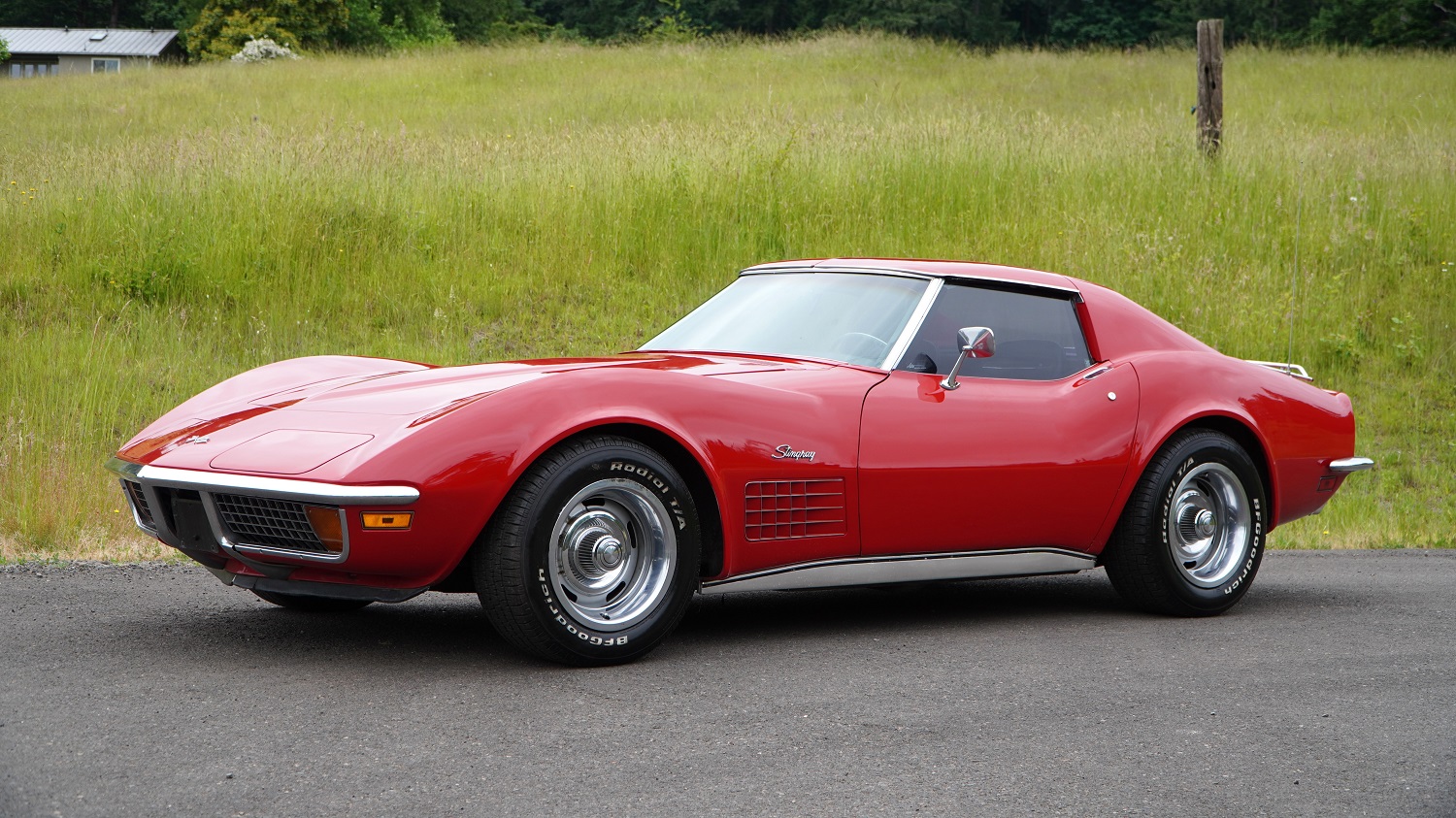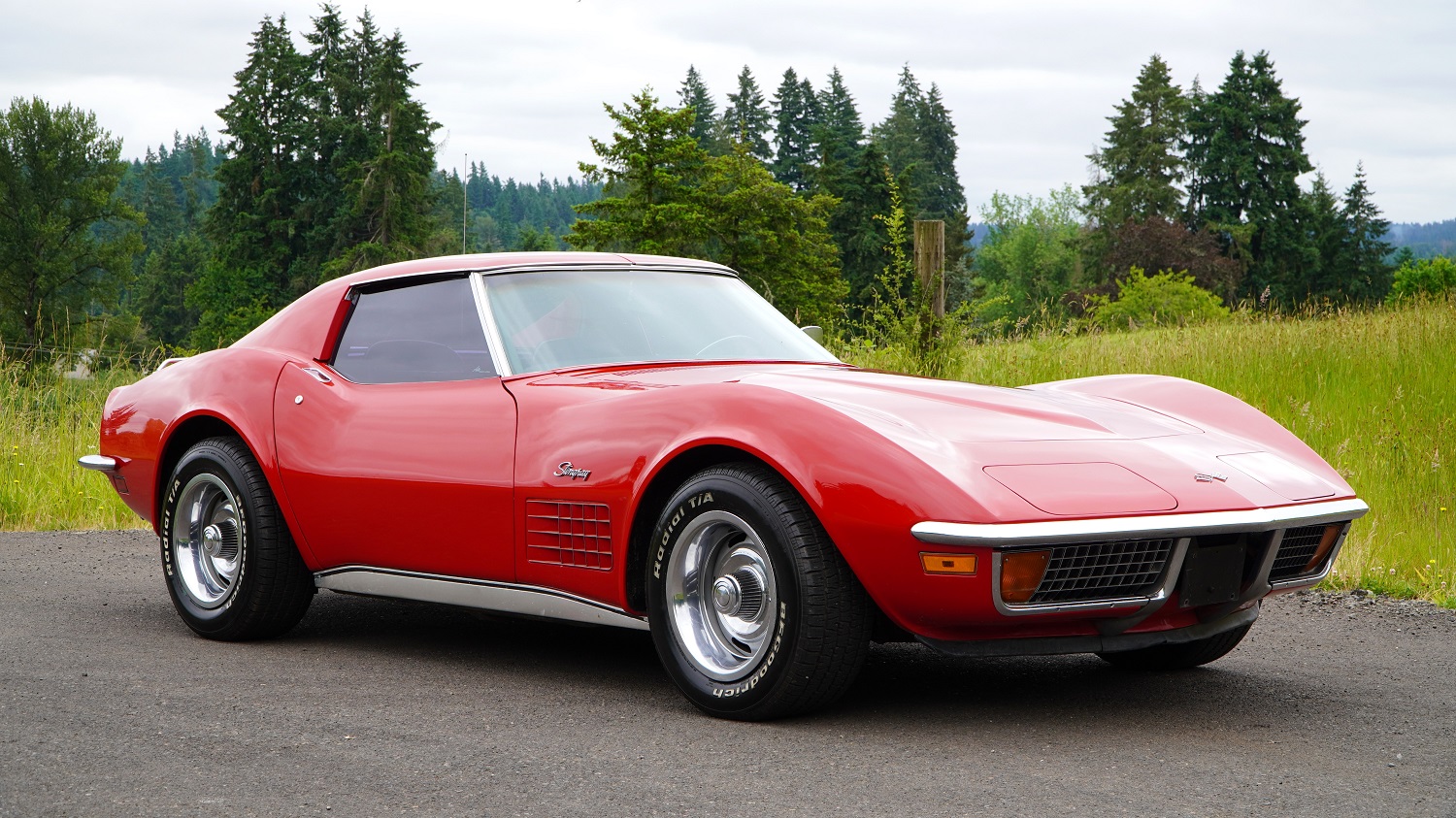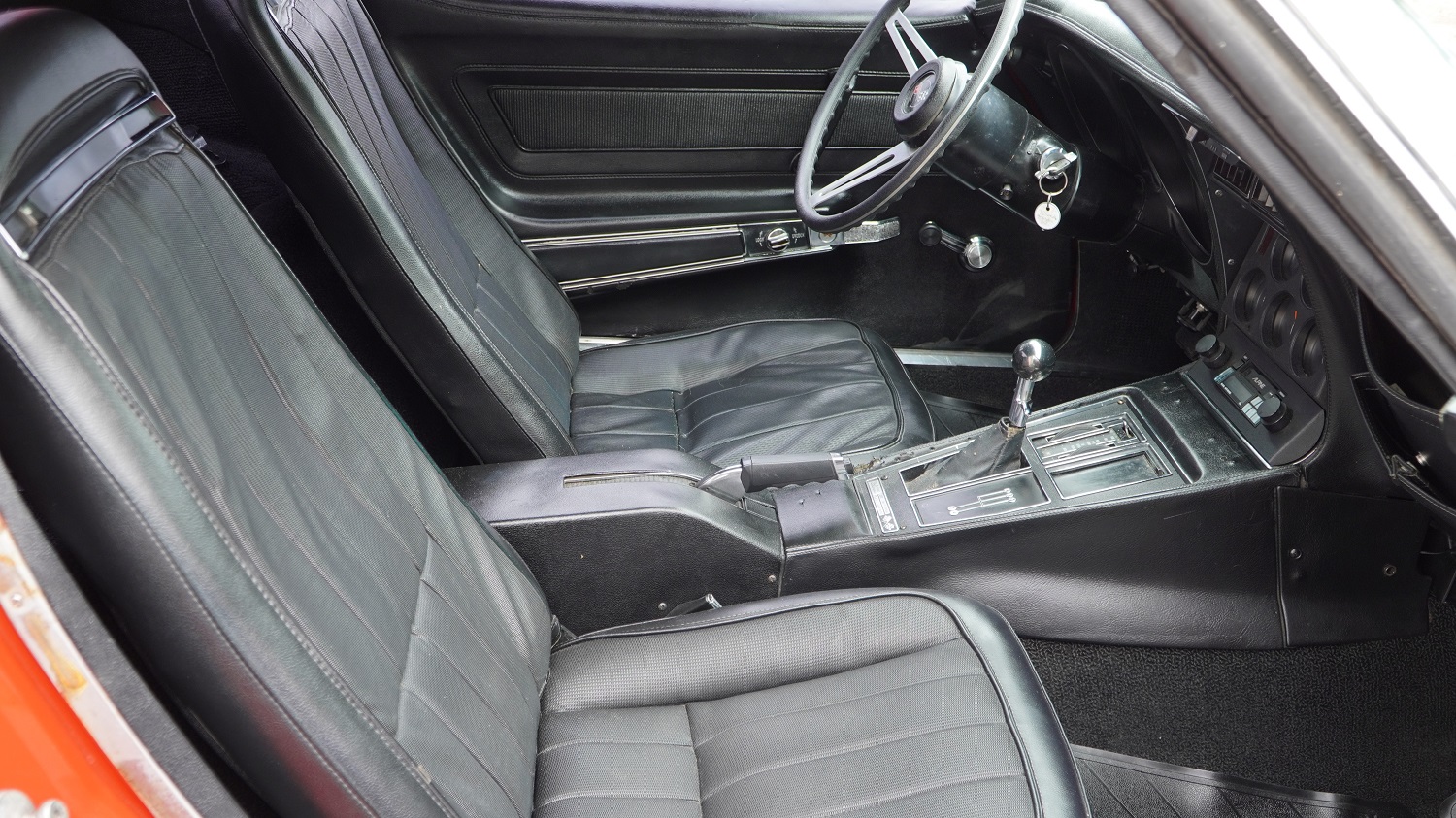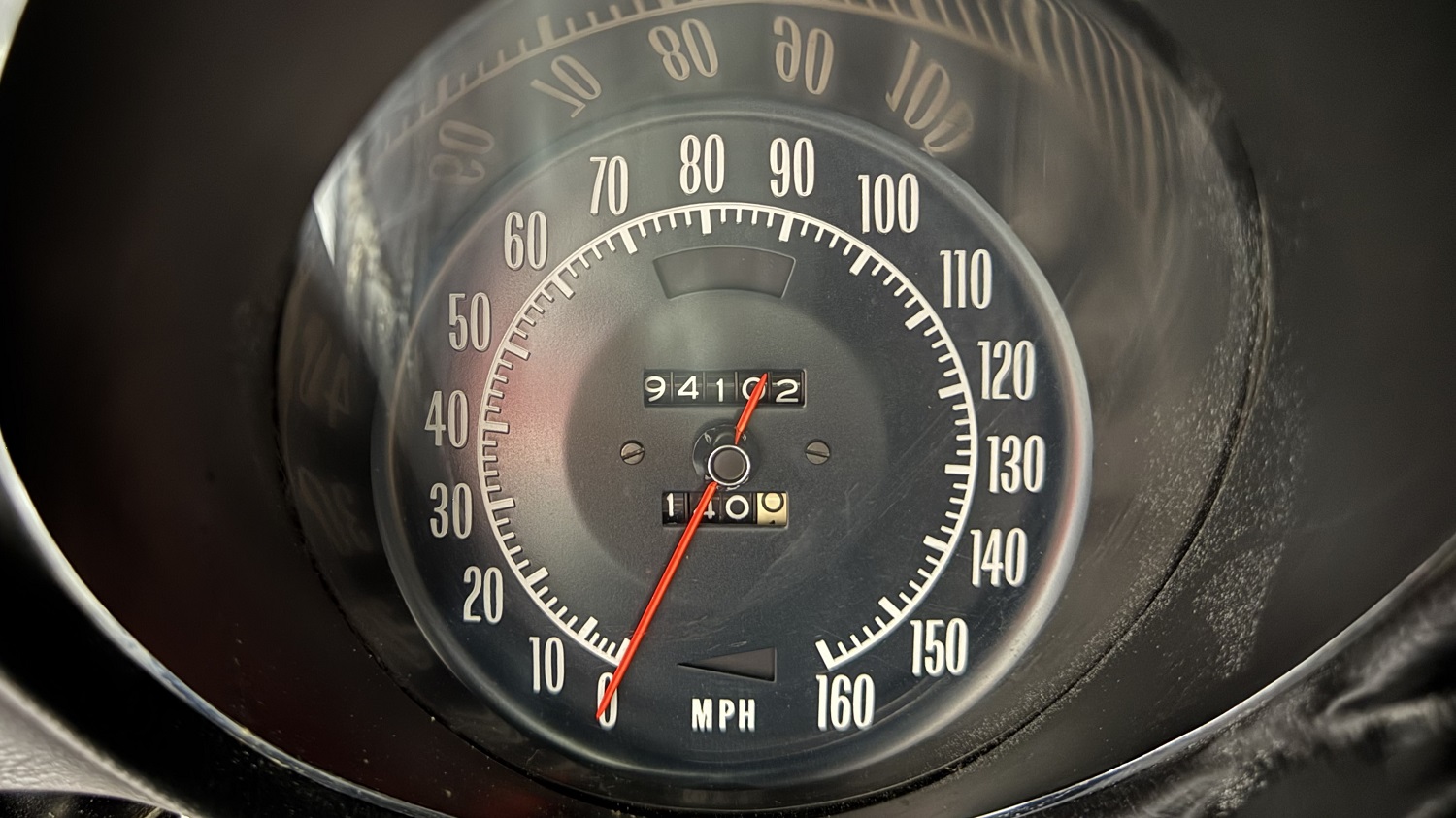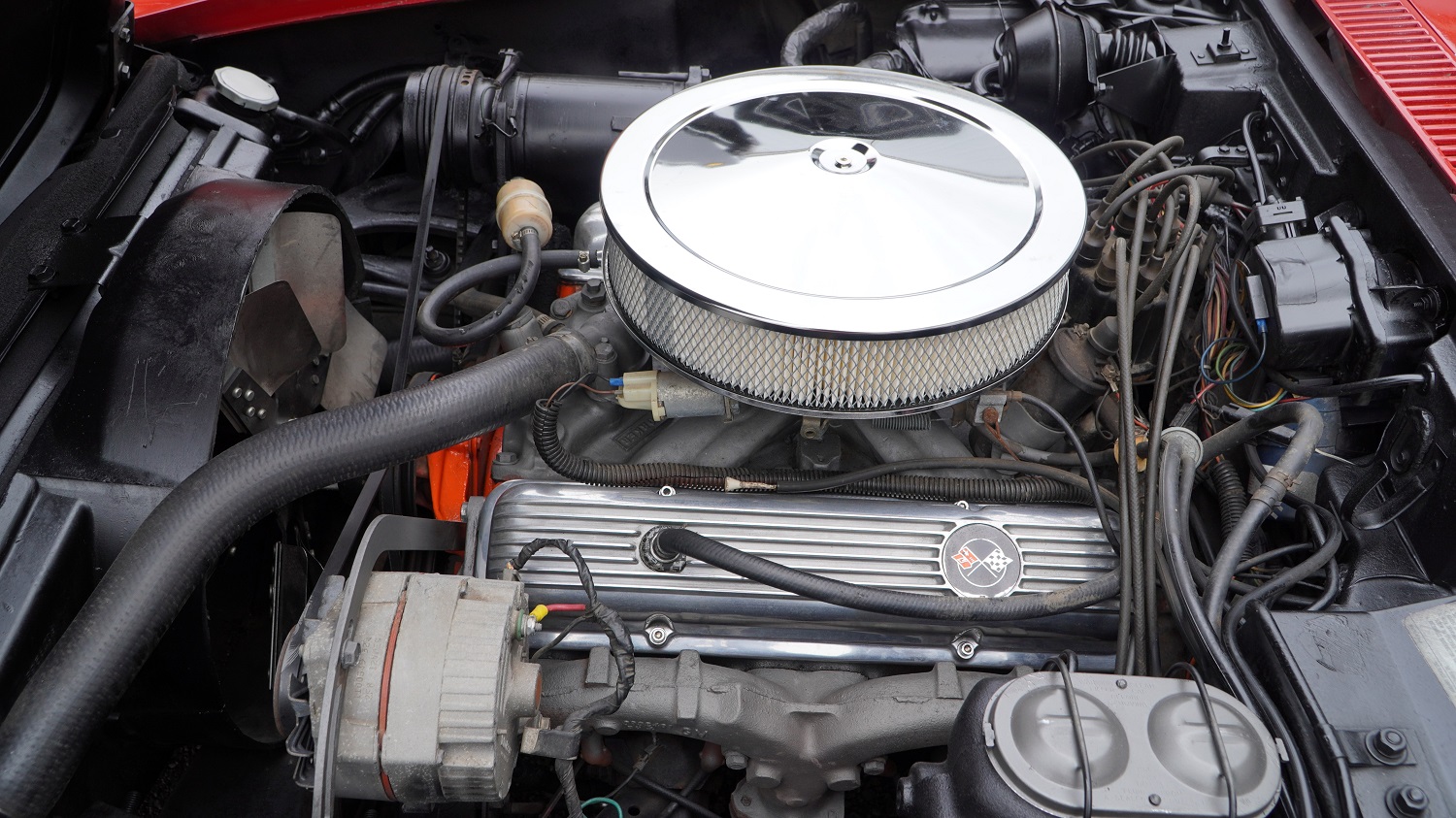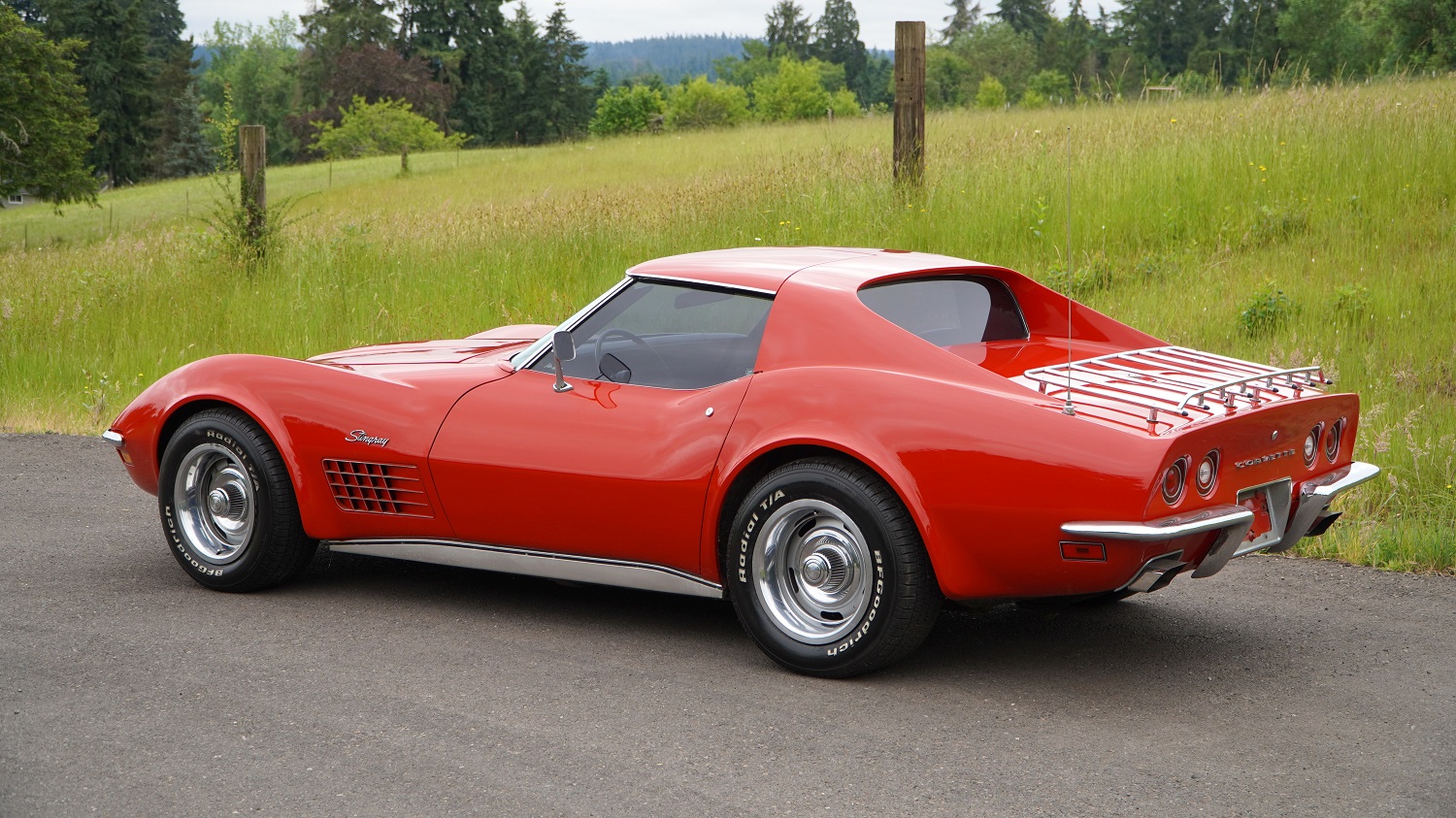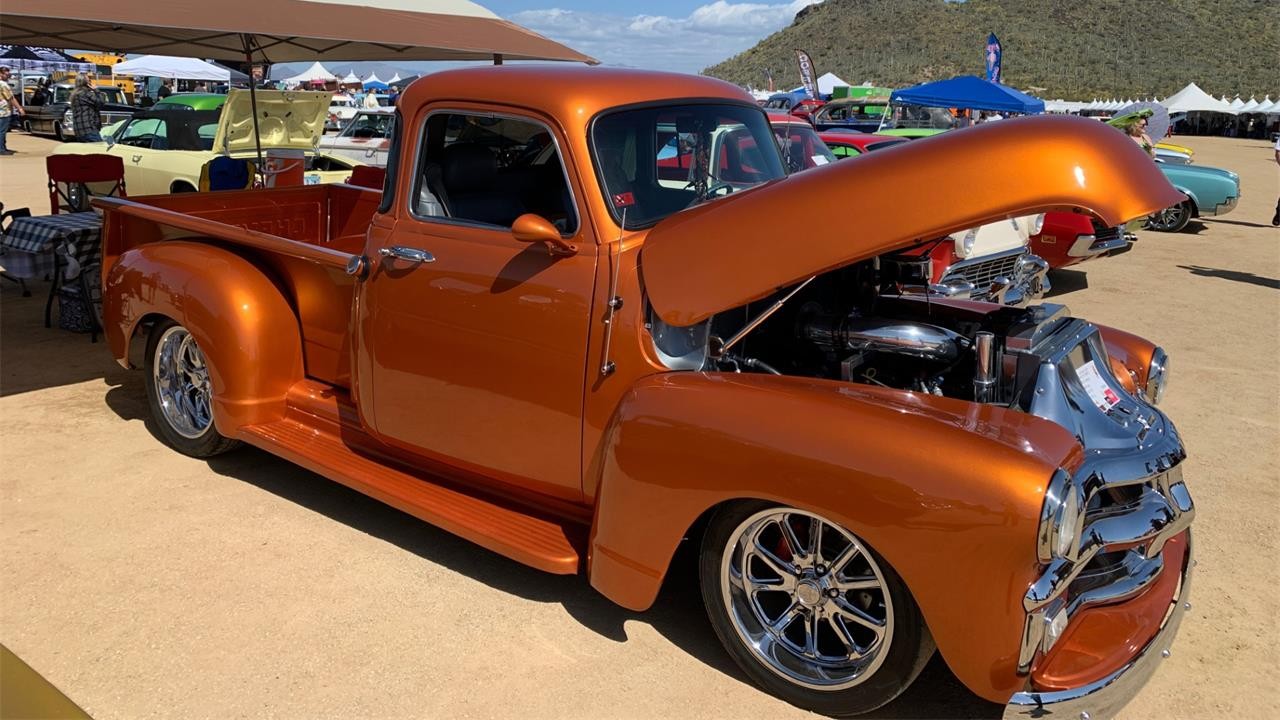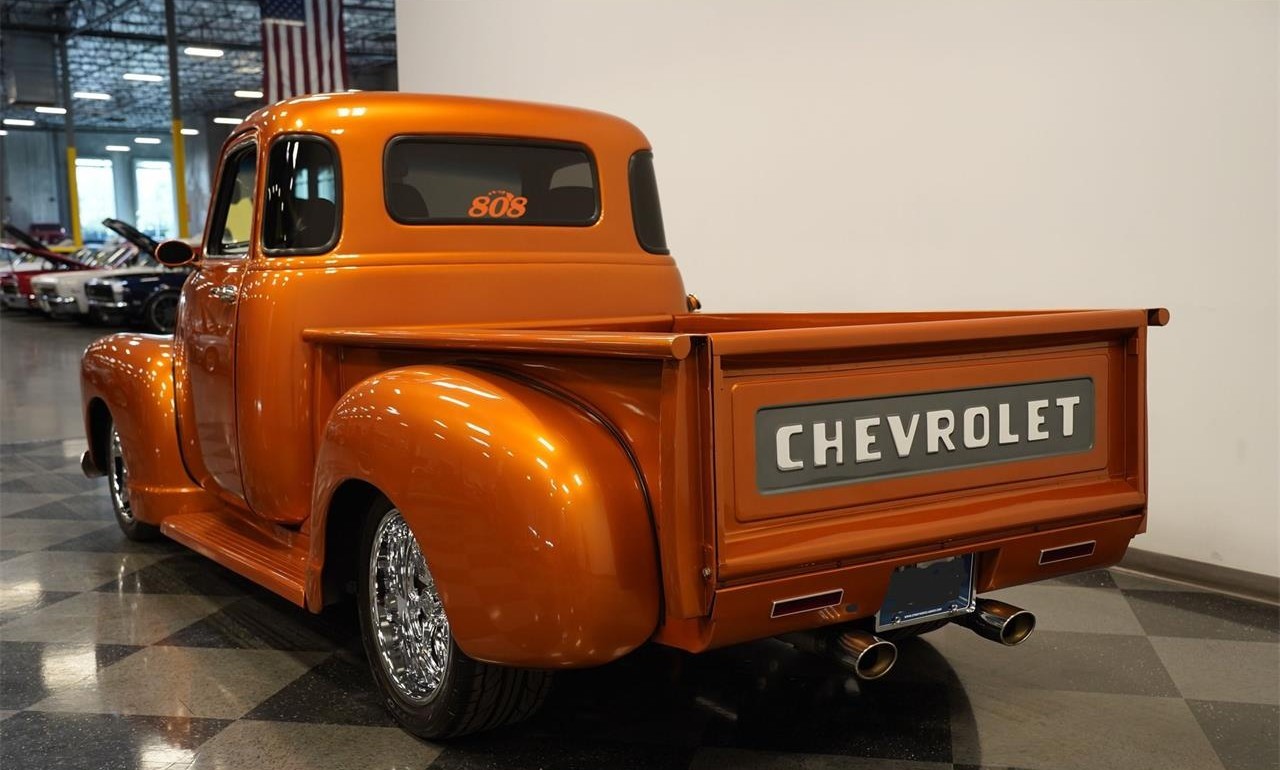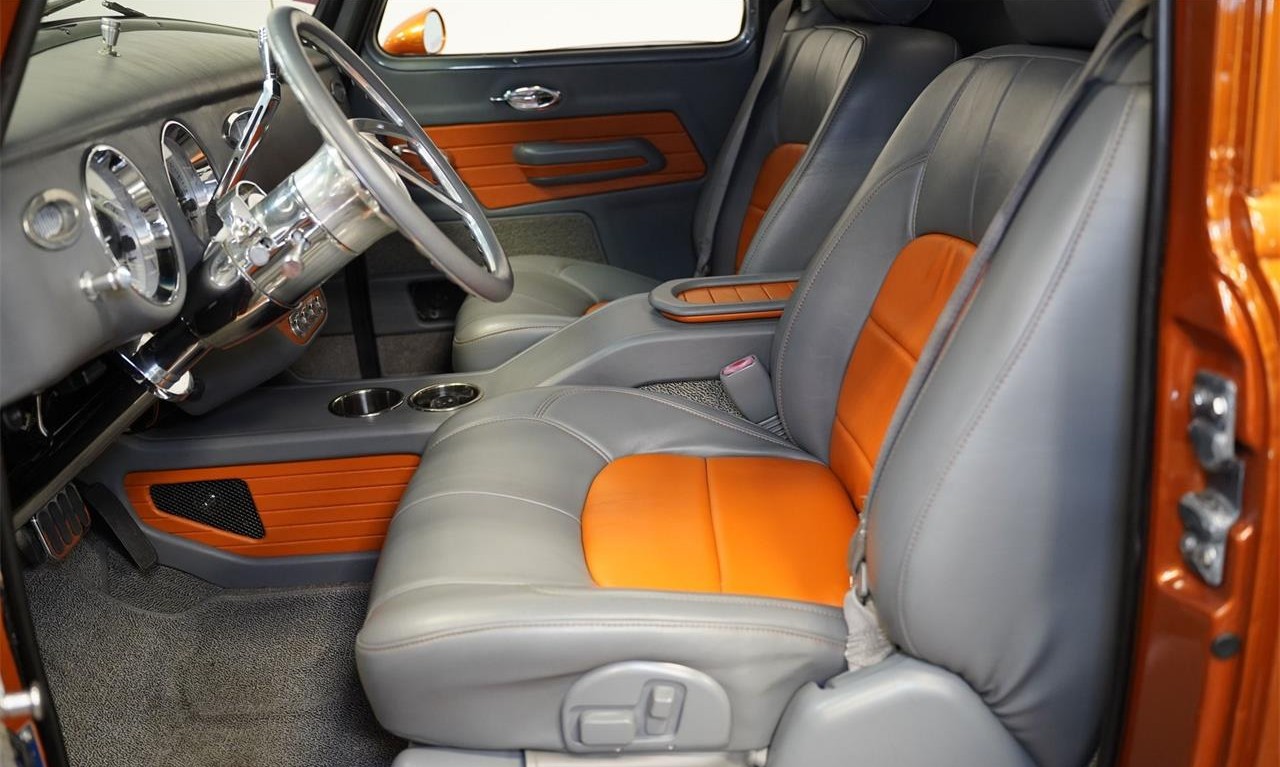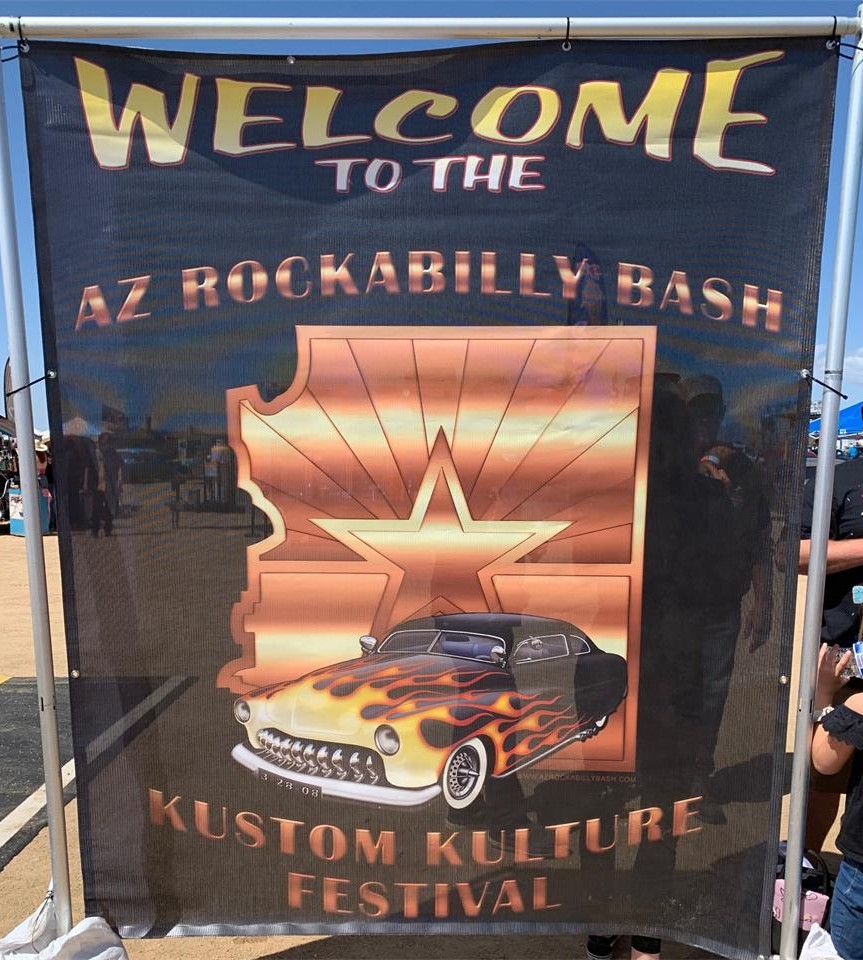A few days ago, we shared the news that Bentley redesigned its “Winged B” badge and would be introducing it on a new concept vehicle. The Bentley EXP 15 is that one-off car, an all-wheel-drive EV that provides a glimpse of both the future of the brand’s design and its first all-electric model coming in 2026.
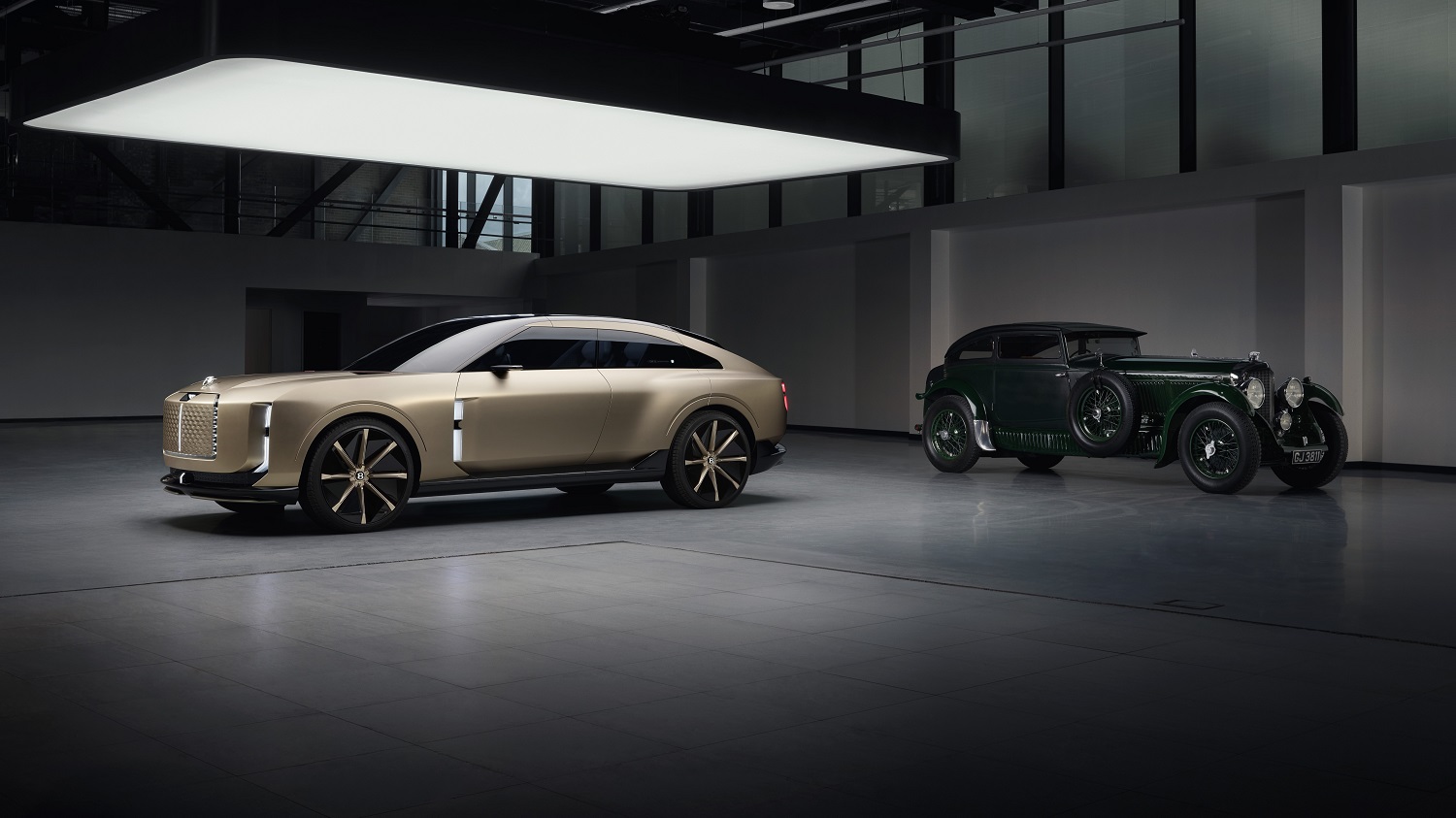
Much of the inspiration for the EXP 15’s design came from the 1930 Bentley Speed Six Gurney Nutting Sportsman coupe, a.k.a. the “Blue Train.” Although then-chairman Woolf Barnato’s Speed Six Weymann four-door by H.J. Mulliner was the car that beat a luxury express known as Le Train Bleu in a race from Cannes to Calais, his Gurney Nutting-bodied Sportsman is the Bentley most commonly associated with the contest.

Like its nearly century-old ancestor, the EXP 15 has an “Endless Bonnet Line” that starts behind the upright LED “grille,” shoots over the strip-like headlights and door-mounted vents, goes under the side windows, and ends with the pronounced rear haunches. The Pallas Gold satin finish is purely 21st century, using an ultra-thin aluminum pigment that allows the EXP 15’s various safety features to transmit through it and be detected by the Lidar in other modern vehicles.
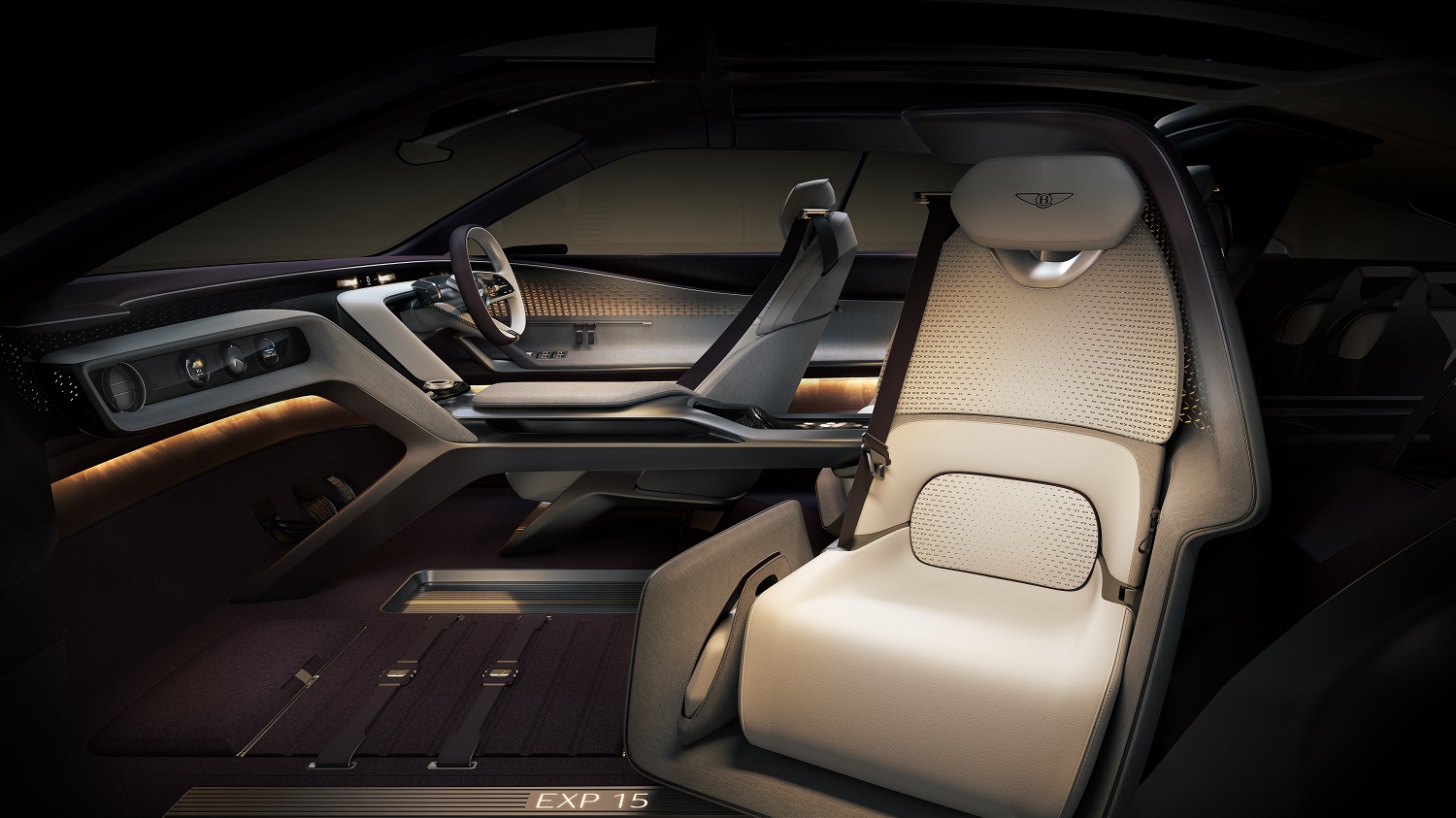
One of the EXP 15’s most distinctive features is its odd number of doors. According to Bentley, “One door on the driver’s side opens to the driver’s seat plus a cocooning rear seat behind, while twin coach doors and part of the panoramic roof open upwards on the passenger side to allow smoother entry and exit via a more luxurious and flexible passenger-side seat that can swivel 45 degrees outwards.” That special bucket can be moved next to the driver’s seat, slid to the back of the cabin, or reclined. To make space for a pet or small personal luggage, the footwell footrests can be folded down into the floor.
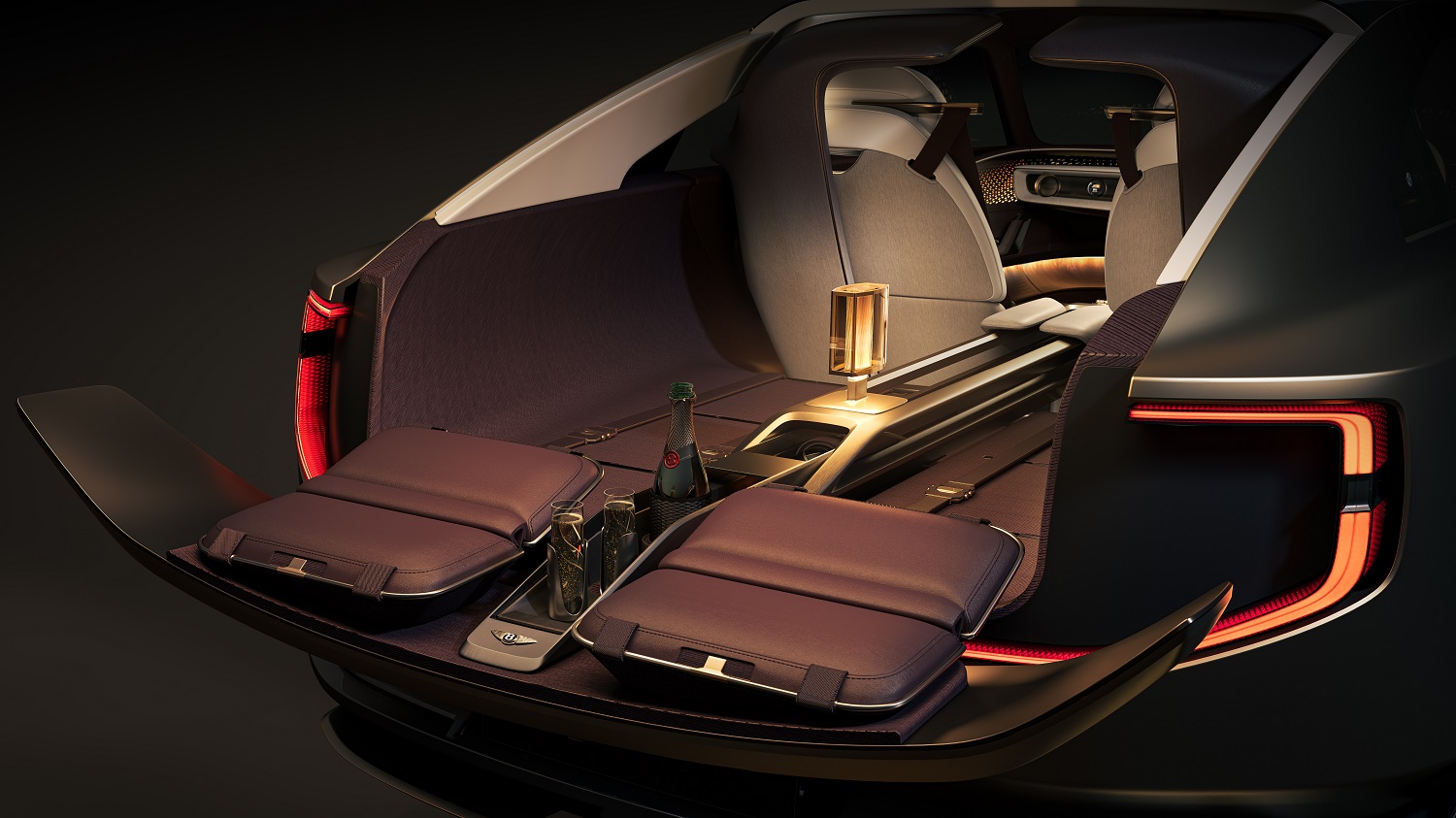
When the rear hatch is opened, a pair of small seats can be folded out and used to enjoy cold drinks from a built-in fridge.

Although the face of the EXP 15’s dashboard can be used as a massive infotainment system screen, it also contains something Bentley calls the “Mechanical Marvel,” a clock-like device with multiple movable and illuminated indicators for things such as the direction the EXP 15 is headed, its charging status, and more. As Robin Page, Bentley Director of Design, said, “We think people are going to get fed up with a fully digital experience and are pining for physical mechanical elements too. By combining the two, you can get the best of both worlds. It’s almost like wearing a beautiful mechanical watch on one wrist and a digital watch on the other.” Using virtual reality, Bentley’s color, finish, and trim team came up with four interior themes, which consist of a variety of textiles and materials such as Fox Brothers wool, 3D-printed titanium, and Gainsborough silk jacquard fabric. There’s also a woven metal mesh Bentley calls “Acrylic Couture,” which is set in acrylic and can display 3D effects in the dashboard when lit up.
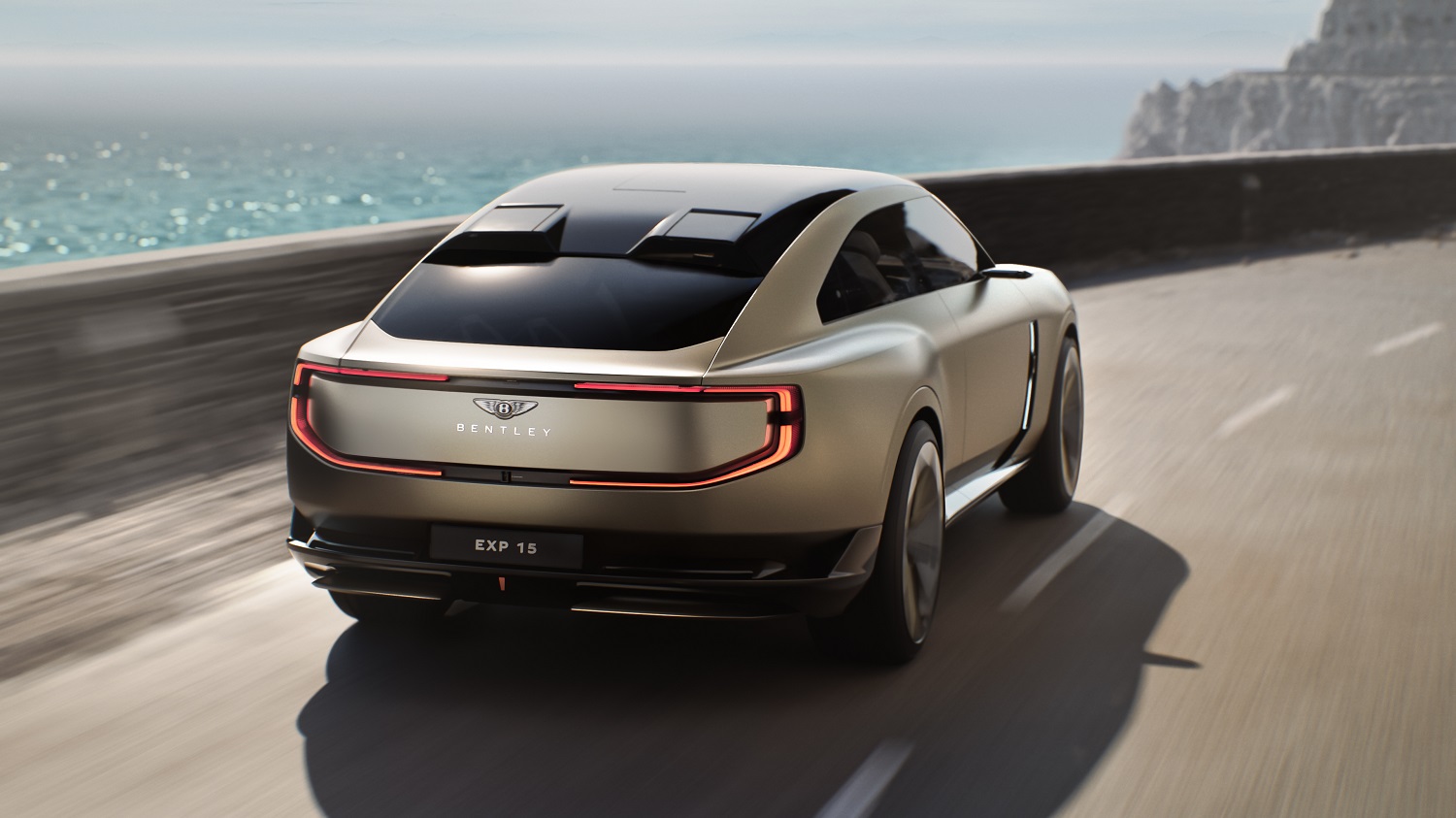
This is a big moment in Bentley’s timeline in which we can see where it’s going in terms of design and engineering for years to come. However, it’s hard not to see the EXP 15 as a product of its time, one seemingly influenced by existing vehicles, particularly EVs. From certain angles, it brings the Rolls-Royce Cullinan to mind; from others, it resembles the Spectre. The massive upright front end has a little BMW 7 Series in it. The roofline’s steep downward slope at the rear is similar to that of the Cadillac Celestiq and points toward the Polestar 2-like taillights.
What do you think of the Bentley EXP 15’s design? Tell us in the Comments section below.

